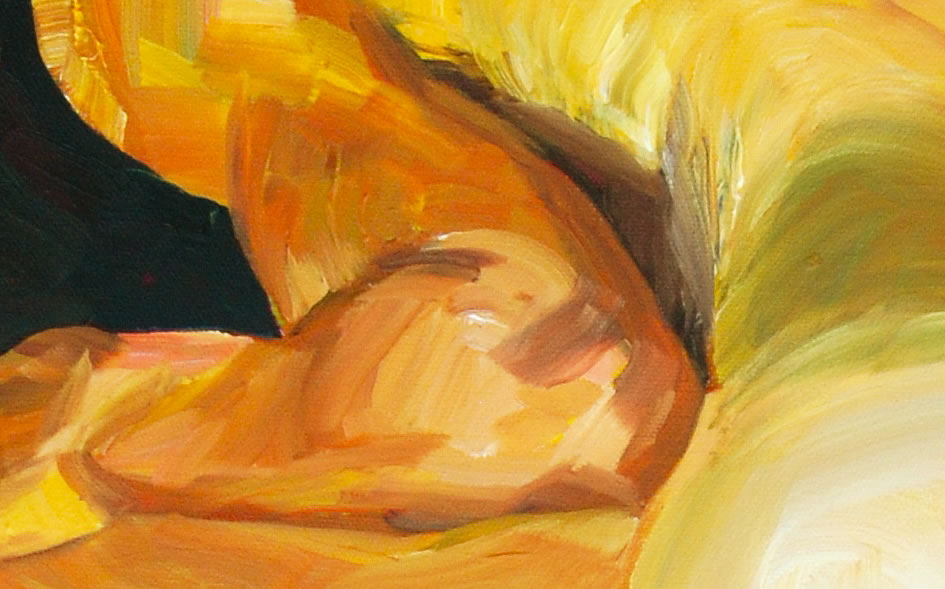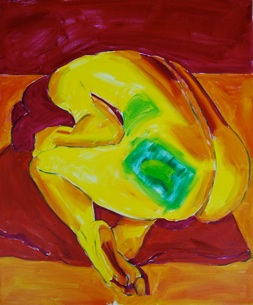After Tai-Shan Schierenberg
Impasto creating form
Tai-Shan Schierenberg was the painter that first fired my deep motivation to paint, some ten years ago. The strength and clarity of the statement in his paintings, the clear observation and simplification all set in the context of the freedom and energy of his mark making and composition. It inspired me then and inspires me now. You can see his work here: www.flowerseast.com/FE/Artists_Originals.asp?Artist=SCHIER
I have tried to learn more about how he makes his paintings by working through one of his life pictures. What you see here are my attempts rather than his picture. In preparation for the painting I did two things. First, create an intense underpainting that set out the main elements of the composition and would add to the intensity of the finished picture. Second, do a drawing that worked through the brush marks. Since the mark making is so critical in this type of painting I wanted to work through it and get more clarity before actually putting brush to paint. Both of these are shown on the right.
The lessons that I got form this were:
- The picture is made with much more simplification than I am used to. It works because of the accuracy of the drawing and mark making. In my own painting I tend to make marks, and more marks, to gradually get the image right. In this picture the image and marks are right so the number of marks is much less.
- We often hear about drawing with as much emphasis on the negative space as the positive one. Doing this picture brought it home to me as essential to creating the simplification.
- Being 100% clear about the mark and its placement is essential to creating the combination of sophistication and simplification. The prior drawing was very helpful to me in sorting through that.
- The underpainting helped in preparing for the main event, as well as adding to the final image.
- As in tonal drawing the main places where tones contrast sharply with their neighbour makes the form and are slightly exaggerated to enhance.
- The use of the direction and shape of the marks to indicate form is very clear. Even in the drawing, where their is no meaningful tonal variation, the form is strong. The direction of the mark suggesting a change in form when compared to the directions of the marks around it and the shape of marks, suggesting the shapes of form that they go around.
- Painting wet into wet with with plenty of paint makes for exciting marks and locks together each of the marks to create a coherent and whole form.



